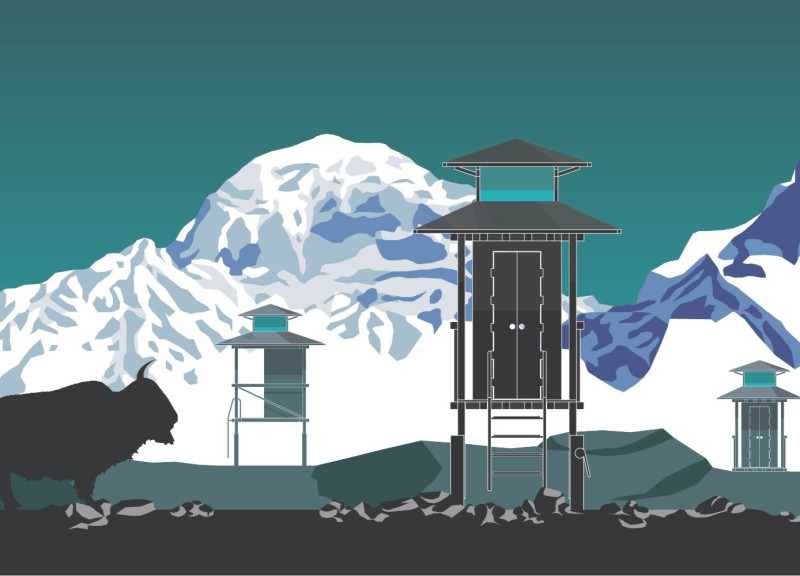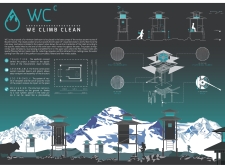5 key facts about this project
The WC design proposal addresses the need for a minimum bathroom facility at the base camps along the ascent routes of Mount Everest. Set in one of the world’s toughest environments, this facility aims to provide climbers with a clean and functional space. The overall design emphasizes user safety, privacy, and adaptability, making it fit for the challenges posed by high-altitude expeditions.
Raised Structure
The structure is built on a raised wooden framework, which serves to reduce risks associated with wildlife while ensuring user privacy. This elevation is crucial in extreme climates, where comfort and usability can be affected by external conditions. By providing a secure space, the design promotes hygiene standards that are especially important in remote camping situations.
Innovative Mechanism
A key aspect of the design is the rack-lever mechanism found within the support poles. This mechanism allows the toilet to be adjusted vertically according to changes in snow levels throughout the year. Such flexibility ensures that climbers can rely on the facility, even as environmental conditions shift with the seasons, maintaining usability no matter the weather.
Cultural Integration
Influences from traditional Asian temples are visible in the simplified form of the upper structure. This design connection to a cultural reference adds an appealing visual aspect. Filter flaps made from special filtering fabrics hide a tank that collects rainwater and melted snow, linking the facility to its natural surroundings and encouraging the use of local resources.
Sustainability Focus
Emphasizing sustainability, the design includes a system for rainwater collection, helping to lessen environmental impact. By using resources such as melted snow and rainwater, the facility promotes efficient water usage in a location where these resources may not always be readily available. Wood is used for the construction, providing durability while adhering to environmentally conscious principles.
The simplicity of assembly and disassembly is achieved through a construction system of wooden beams and pillars, making transport and setup straightforward for climbers. This practical approach addresses immediate needs while reflecting a considerate attitude toward infrastructure in demanding environments. It enhances the climbers' overall experience by maintaining essential requirements for hygiene and safety.


















































